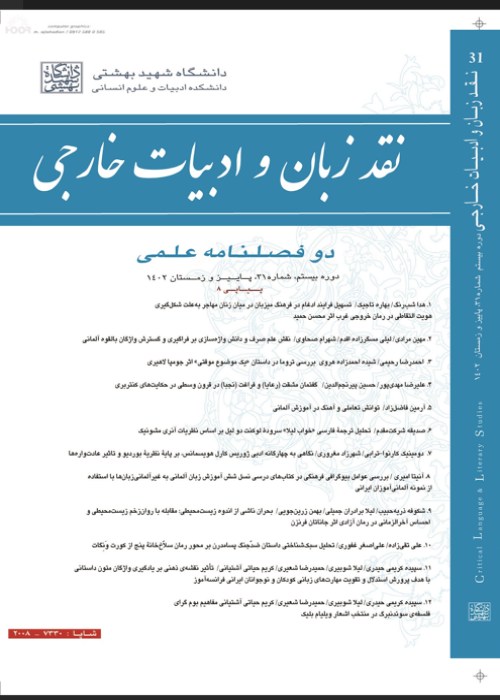A Stylistics of the Anti-War Postmodern Narrative in Kurt Vonnegut’s Slaughterhouse-Five
Vonnegut’s fiction is often read for science fiction, black humor, satirical, and postmodernist. However, the present research reads Slaughterhouse-Five mainly as an anti-war story. Thomas F. Marvin contends that the meaning of the novel as anti-war is a mixture of “brutal realism with science fiction” in the context of which it “challenges readers to make sense of a world gone mad” (131), while its madness is illustrated in (a) Billy’s physical and mental inability to take his role as the protagonist because of which war is, for him, not more than a senseless slaughter of many victims, and (b) the portraiture of a nation that has destroyed the basic human rights including freedom and democracy. Other critics have evaluated Vonnegut’s prose style in this novel as an anti-war story. After reminding the reader about the inseparability of the form and content of Slaughterhouse-Five, Kevin Aleaxnder Boon (2011) points to the replacement of nonlinear narrative with the conventional linear narrative through which the author stages the experiences of Billy who is “unstuck in time”. Background of the Study: In Chapter 35 of his last novel, Timequake (1998), Vonnegut divides story-tellers into two groups of “swoopers” and “bashers” while he considers far different working methods for each. He admits that swoopers write quickly and then come to painstakingly revise their writing. Then, he claims that “Bashers go one sentence at a time, getting it exactly right before they go on to the next one. When they're done they're done” (108), and he puts himself in the second group. In Pity the Reader: On Writing with Style (2019), Vonnegut and Suzanne McConnell argue it is through bashing that Vonnegut has achieved a major breakthrough in the American postmodernist fiction to formulate answers to two major questions: “What in heck should we be doing? What in heck is really going on?” (165). Although Timequake came out about three decades after Slaughterhouse Five, the latter is often regarded as Vonnegut’s answer to these questions. The high frequency and worldwide dispersion of war is the major problem which he repeatedly satirizes in the novel to show war as trivial and the war authorities as clownish, so that the people take war as down to their ambition.
Taking it that Vonnegut’s text is a postmodernist anti-war story, a descriptive-analytical methodology is used to show how the “brutal realism” of the novel along with its episodic structure, its delicate or fragile characterization, its “tralfamadorian concept of time” which makes it possible for Billy to go “from life to death to life and then back to pre-birth in the novel” (McGinnis 2011, 155), and the features of a “plotless” novel help trivialize war through the analysis of the more important scenes, the more frequent language structures, the interfusion of form and meaning, etc.
Via a two-sided plot that simultaneously looks to the past and the future, Slaughterhouse-Five provides a discourse that shows war as a ridiculous and sinister yet avoidable phenomenon. It shows war as ugly and ridiculous, and as tedious, trite, and clownish, and war authorities as buffoons, so that the readers take war as down to their ambition and turn back to it. The stylistic features Vonnegut employs in this novel for the achievement of his anti-war purposes include the use of satire in objective and virtual narrative, historiographic metafiction, the sci-fi features, the protagonist as unstuck in time, juxtaposition of the real and the imaginary, the use of adaptive narrative structure, as well as the traits of intertextuality and narrative focalization.
- حق عضویت دریافتی صرف حمایت از نشریات عضو و نگهداری، تکمیل و توسعه مگیران میشود.
- پرداخت حق اشتراک و دانلود مقالات اجازه بازنشر آن در سایر رسانههای چاپی و دیجیتال را به کاربر نمیدهد.




